Dissolving Fillers
Hyaluronidase dissolves unwanted or misplaced hyaluronic acid dermal fillers, restoring natural facial contours and peace of mind.
When dermal filler results don’t meet expectations or complications arise, our filler dissolution treatment offers a safe, effective solution to restore your natural facial contours.
Using hyaluronidase, an injectable enzyme that breaks down hyaluronic acid-based fillers, we can address concerns such as overfilling, asymmetry, lumps, misplaced filler, or rare medical complications like vascular occlusion.
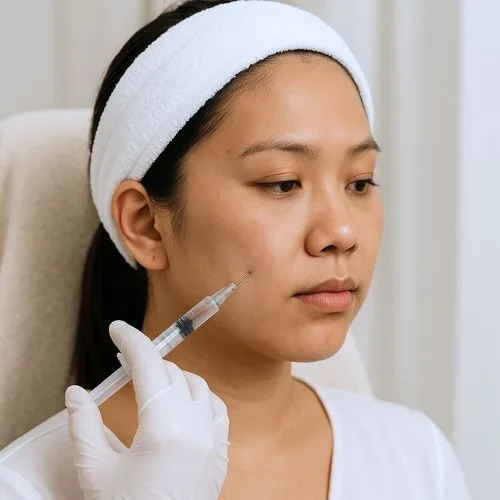
What Is Hyaluronidase?
Hyaluronidase is an injectable enzyme used to dissolve hyaluronic acid (HA)-based dermal fillers safely and effectively.
Commonly administered when fillers cause aesthetic issues like unevenness, overfilling, or complications such as swelling or vascular occlusion, Hyaluronidase works by breaking down the HA molecules through a natural metabolic process.
Once injected into the area, it rapidly softens and disperses the filler, allowing the body to absorb and eliminate it over the following days
How Does Hyaluronidase Break Down HA Fillers?
When injected into the area where HA filler needs to be dissolved, hyaluronidase acts rapidly through a process called hydrolysis.
It breaks down the chemical bonds within the hyaluronic acid molecules, converting the solid gel into smaller, absorbable fragments. These fragments are then naturally metabolized and absorbed by the body.
This makes most HA-based filler procedures easily and safely reversible, working quickly to restore the area to its pre-filler state or to correct specific issues.
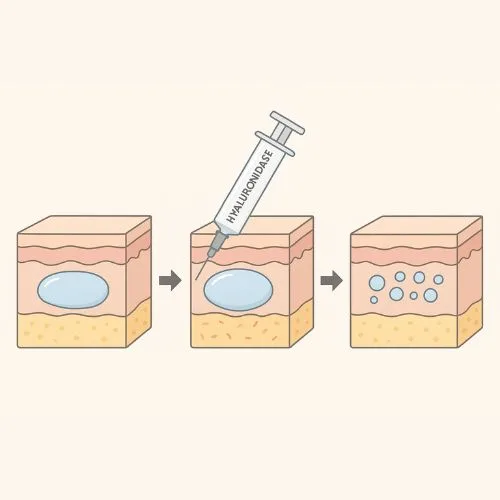
Why Do You Need to Dissolve Fillers?
While dermal filler treatments are generally successful, there are several reasons why one might consider dissolving them:

Aesthetic Dissatisfaction
Sometimes, the results may not align with the patient's expectations, leading to an overfilled appearance, asymmetry, or an unnatural look.
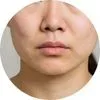
Lumps, Bumps, or Irregularities
Palpable lumps or visible irregularities can occur due to filler migration, improper injection technique, or individual healing responses.

Product Misplacement
Filler injected into an unintended area can lead to undesirable contours or effects.
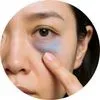
Bluish Discoloration (Tyndall Effect)
This can happen when superficial fillers reflect light, creating a bluish tint under the skin, most commonly seen under the eyes.

Excessive Swelling or Edema
Prolonged or significant swelling that doesn't resolve naturally can indicate a need for dissolution.

Medical Complications (Rare but Serious)
In very rare instances, filler can be inadvertently injected into a blood vessel (vascular occlusion), which is a medical emergency requiring immediate dissolution to prevent tissue damage.
What is the Treatment Process for Filler Dissolve?
The process of dissolving dermal fillers with hyaluronidase is simple and typically quick:

Pre-Treatment Consultation and Assessment
Consultation with our experienced aesthetic doctor. He will assess your concerns, review your medical history, and examine the area where the filler was injected.

Skin Patch Test for Allergy (Optional)
If you have multiple allergy history or severe allergic reaction, please inform the doctor so that small patch test can be performed on your forearm before the full injection.

Preparation for the Procedure
Ice pack will be applied to the treatment area to ensure your comfort, numbing cream is not required.

The Injection Process
Exact areas where the filler needs to be dissolved will be targeted. Using a fine needle, small, controlled amounts of hyaluronidase will be injected directly into the hyaluronic acid filler.
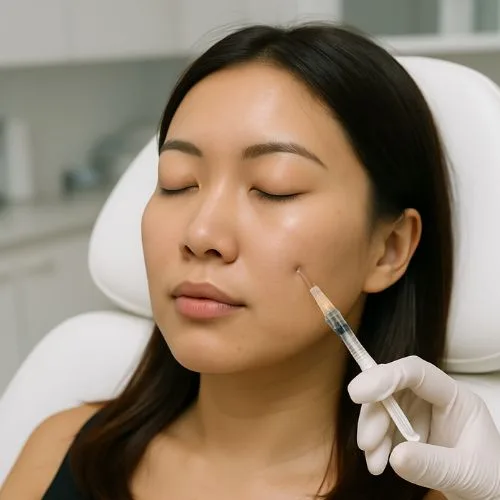
What to Expect During the Treatment?
The actual injection process is relatively quick, typically taking less than 5 minutes, depending on the size and number of areas being treated. You may feel a slight stinging during the injections, but this is usually well-tolerated.
Post-Treatment Care
- Avoid massaging the treated area for a few hours.
- Applying a cold compress to reduce swelling (if needed).
- Avoiding strenuous exercise, saunas, and excessive heat for 2-3 days.
Ready for Dissolving Filler in Singapore with Kowayo Aesthetic Clinic? Book Your appointment Now.
Contact us today to schedule a consultation and safely dissolve unwanted or misplaced hyaluronic acid dermal fillers, correcting uneven or misplaced fillers.
FAQ About Filler Dissolution
Is filler dissolve painful?
Most patients report minimal discomfort. No numbing cream is required and the injections are quick (less than 5min). You might feel a slight stinging sensation during the procedure.
How many sessions are needed?
In most cases, a single session is sufficient to achieve the desired dissolution. However, for larger volumes of filler or more complex cases, a second session may be required after 1-2 weeks.
What are the risks and side effect?
While generally safe, potential risks include bruising, swelling, tenderness, and, rarely, allergic reactions or temporary skin depressions.
Can Hyaluronidase dissolve my natural hyaluronic acid?
Yes, hyaluronidase can theoretically break down some of your body’s natural hyaluronic acid. However, when administered by an experienced doctor with proper dose, the enzyme is specifically targeted to the injected filler, and any minimal breakdown of natural HA is quickly replenished by the body.
When can I re-treat with fillers?
If you plan to have new dermal fillers injected in the same area after dissolution, it is generally recommended to wait about one week to allow the hyaluronidase to fully clear and for any residual swelling to subside. This ensures that the new filler is placed accurately and effectively.
What if I don't like the results after dissolution?
If you are unhappy with the results after the filler has been dissolved, our doctor will discuss alternative aesthetic solutions or re-treatment options with you to achieve your desired outcome.
What is the cost of dissolving dermal fillers in Singapore
The cost of dissolving dermal fillers in Singapore can vary depending on several factors, including:
- The amount of hyaluronidase required.
- The complexity of the case (e.g. corrections vs. complete dissolution).
- The number of areas being treated.
- The expertise of the doctor and the clinic’s reputation.
